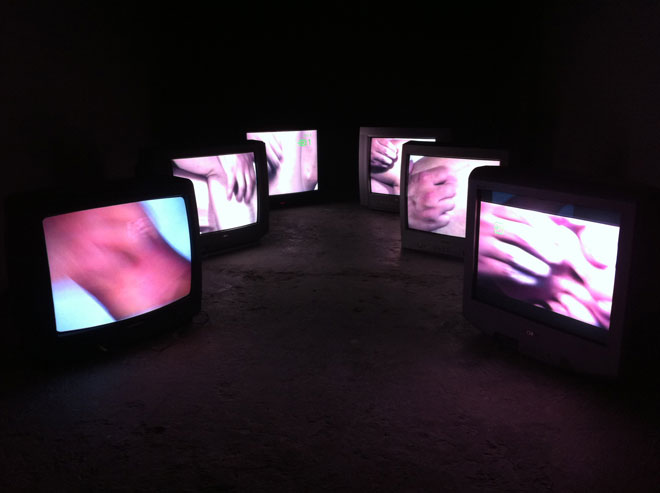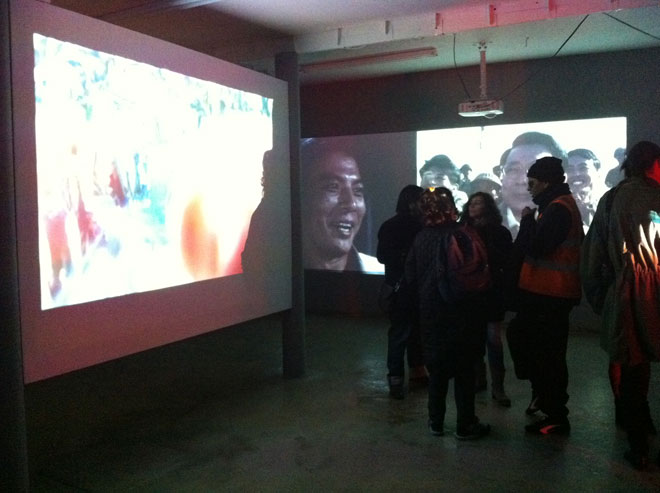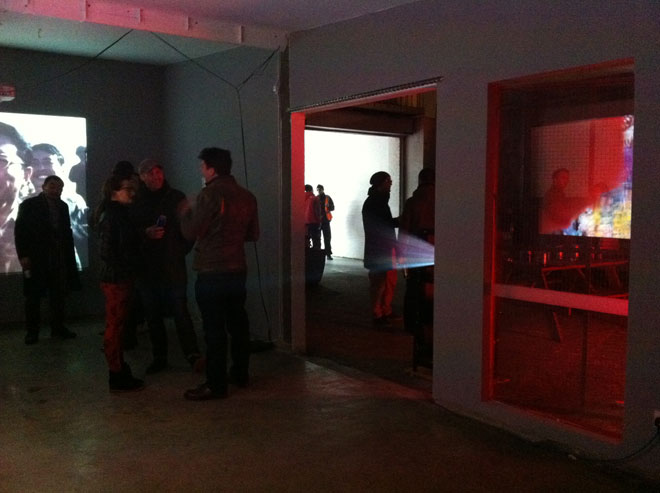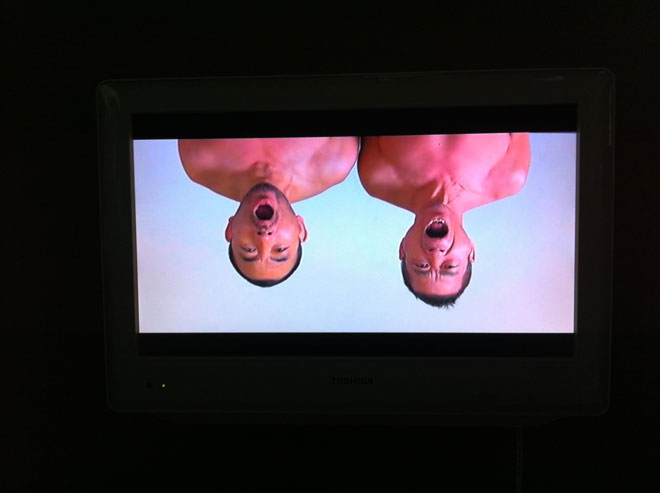Point at a Deer, Call it a Horse
Cul De Sac Gallery ( 65 – 69 County Street, London, SE1 4AD) March 2 – April 21, 2013
“Point at a Deer Call it a Horse” is based on the Chinese idiom “Zhi Lu Wei Ma 指鹿为马” — to confuse right and wrong, to distort reality through misrepresentation, to deceive. Historically, it dates back to Zhao Gao, a prime minister of the Qin Dynasty who, in 207 BCE, used dissent to test the court, gauging their loyalty by presenting the emperor with a deer and saying, “This is a horse.” This metaphor for the curatorial rationale has a clear presence in all of the works on display, further reinforcing the show’s notion of “unreal socialism.” It attempted to create a social commentary on the frenetic pace of change and conflicts between the individual, the authorities and culture in contemporary China provided by the Chinese and UK-based artists Ai Weiwei, Cai Yuan and JJ Xi, Stephen Hall and Ren Li Li, Liu Xinyi, Ye Funa, Zhang Peili and Zhang Ding. However, the intensely layered visual and aural articulation of the video, film and performance works, created an overwhelming sensory cacophony through their close proximity in the gallery space, often confusing context thus, distracting from the intended concept. This interweaving could be seen as purposeful in putting head-to-head the emotional to the absurd, the nostalgic past to the present and future, the personal to the public, and the serious to the sarcastic. In my opinion, they act as parodies through which we are enabled to confront the powerful reality of global mass media by engaging in the real or staged re-enactments, documentaries and dramatic filmic compositions that each seek to denote the limitations of socio-political boundaries in China and, thus, the censorship of their individual and collaborative “voice.”
As you enter Cul De Sac Gallery from the end of County Street — where an exact replica of the fourth plinth from Trafalgar Square stands tall, confusing your and its own urban displacement in the city of London – you are unexpectedly faced with the rear of a life-sized stuffed horse that is idolized on its own plinth facing and in tense silent dialogue with a life-sized stuffed deer, both created by the gallery’s founders and exhibition’s curators Stephen Hall and Ren Li Li, making an immediate and literal reference to the exhibition’s title.
As you walk through into the rear gallery space, your senses are punched in the face with Liu Xinyi’s video “Street Fighter” (2012), a recording of an automated punching robot in front of a static image of a riotous crowd, a staged political riot, playing on references of the media and digitised representations of socio-political struggles and the power of activism. The audio from this piece — screams of an aggressive crowd on top of synthesised noises of punching — dominate the gallery space.
These notions are continued in the short documentary film of Scream performed by Cai Yuan and Jian Jun Xi (Mad for Real), renowned for their performative radical gestures, screened in the main gallery space. This work, previously performed at Tate Modern and on the Millennium Bridge, London, in 2012, was presented as a public intervention during the opening evening event for the exhibition, making another clear verbal statement about power struggles for and between the individual and the masses. Cai and JJ were seen to shout and yell, screaming at the tops of their voices and fighting against each other’s incomprehensible tones — in contrast to the silent audience. The brash absurdity of the performance was laced with humorous undertones that automatically engaged the audience who could then be seen, in part, to join in with the screaming.
The environment constructed at this exhibition, and at the opening, was unique in respect that it gave a realistic representation of how exhibitions are curated in “China terms” with its raw, grass roots energy and dynamism in the art practice on display, the specific contexts examined as part of contemporary Chinese culture, and interpretation being open for the viewer through an intended limited methodology within the curatorial strategy. Momentarily, it was as if a slice of the contemporary Chinese art scene had made its way to London. However, is this just another re-enactment, a staging as such that we are left to question much like the works on display?
2013.04.01 Mon, by Rachel Marsden Translated by: 陈晶晶 Check out Randian website here





 Back to Index
Back to Index